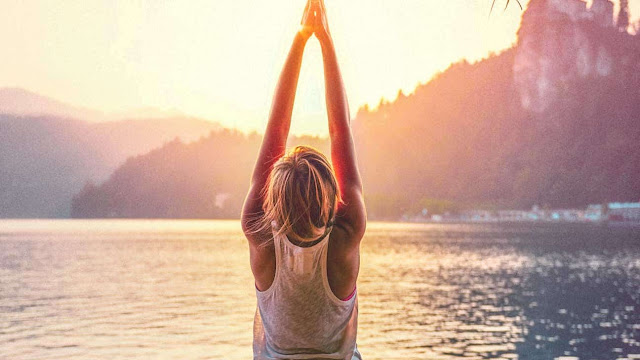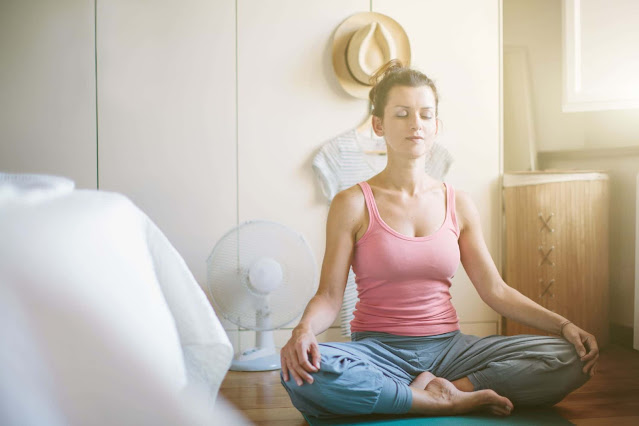ü Meditation
The practice of meditation dates back thousands of years. The initial purpose of meditation was to aid in a deeper comprehension of life's mystical and holy elements. Nowadays, meditation is frequently used to unwind and reduce tension.
Considered a kind of supplementary medicine for the mind and body, meditation. Deep relaxation and mental calmness are two effects of meditation.
You concentrate during meditation and get rid of the constant stream of disorganized ideas that might be stressing you out. The approach may lead to improved mental and emotional health.
ü Types of meditation
The numerous techniques for achieving a calm state of being are together referred to as meditation. The components of meditation may be found in many different relaxation and meditation techniques. The pursuit of inner tranquility unites everybody.
Some techniques for meditation include:
· Guided meditation. With this type of meditation, also known as guided imagery or visualization, you create mental pictures of settings or circumstances that you find soothing.
You make an effort to engage all of your senses, including scents, sights, sounds, and textures. An instructor or advisor may lead you through this procedure.
· Mantra-based meditation. To stop distracting thoughts, you silently repeat a relaxing term, idea, or phrase throughout this sort of meditation.
· Mindfulness Meditation. Being attentive, or having a greater awareness and acceptance of existing in the present moment, is the foundation of this style of meditation.
During mindfulness meditation, your conscious awareness is widened. During meditation, you pay attention to the sensations you are having, including how your breath is moving. Your ideas and feelings are visible. But do not pass judgment; let them go.
· Yoga. To encourage a more flexible body and a peaceful mind, you engage in a sequence of postures and regulated breathing exercises. You are urged to put less emphasis on your hectic day and more emphasis on the present as you work through postures that call for balance and attention.
ü Why position matters:
Because of its many advantages, meditation is becoming more and more popular.
There are several variants and approaches for meditation, therefore there isn't a one-size-fits-all approach. But to get started, you don't need to study every book on the subject or start enrolling in retreats all over the world. Simply take a seat, unwind, and breathe where you are.
Sitting meditation in a chair:
·
It is simple to meditate while seated on a chair, making it the ideal exercise for lunchtime rest and renewal at work. You can meditate while you're driving or working.
Sit in your chair with a straight back and your feet flat on the floor to prepare for meditation. Your knees and theirs should make a 90-degree angle. It might be necessary for you to move to the chair's edge.
Ensure that your neck and head are in alignment with your spine by sitting up straight. For further support, you might tuck a cushion behind your lower back or under your hips.
You can lay your hands on your knees or on your lap if you're unsure of what to do with them.
· Meditation while standing:
Try standing meditation if you feel better at ease standing up straight.
Stand tall and with your feet apart by your shoulders. Move your feet such that your toes are pointed slightly apart and your heels are turning inward.
Knees should be slightly bent once you are in position. With each breath, let your body sink through your feet. With each breath in, see your energy rising through the crown of your head.
Put your hands on your tummy so you can feel the movement of your breath throughout your body to further aid in relaxation.
· Kneeling meditation:
Try it if you can comfortably kneel down and are in a position to do so. This stance has the benefit of making it simpler to maintain a straight back.
Rest on the ground with your knees bent to perform this. Your ankles should be below your bottom and your shins should be flat on the ground. A cushion may be positioned between your bottom and heels to provide greater support and ease knee stress. In this posture, discomfort shouldn't be an issue for you. If so, try a different meditation position that enables you to feel calm and pain-free.
Make careful to center your weight on your hips as you lean back. By doing this, you may avoid placing too much strain on your knees.
· Lying-down meditation:
If you lie down, you could find it simpler to unwind and let go of anxiety. Your entire body is supported in this manner.
You should perform this by lying on your back with your arms out to the side. Your toes can be turned out to the side and your feet should be hip distance apart.
If this makes you uncomfortable, adjust the stance so that your lower back is supported. To gently lift your knees while sleeping flat, place a cushion beneath them. You may also stand with your feet flat on the ground while bending your knees.






0 Comments